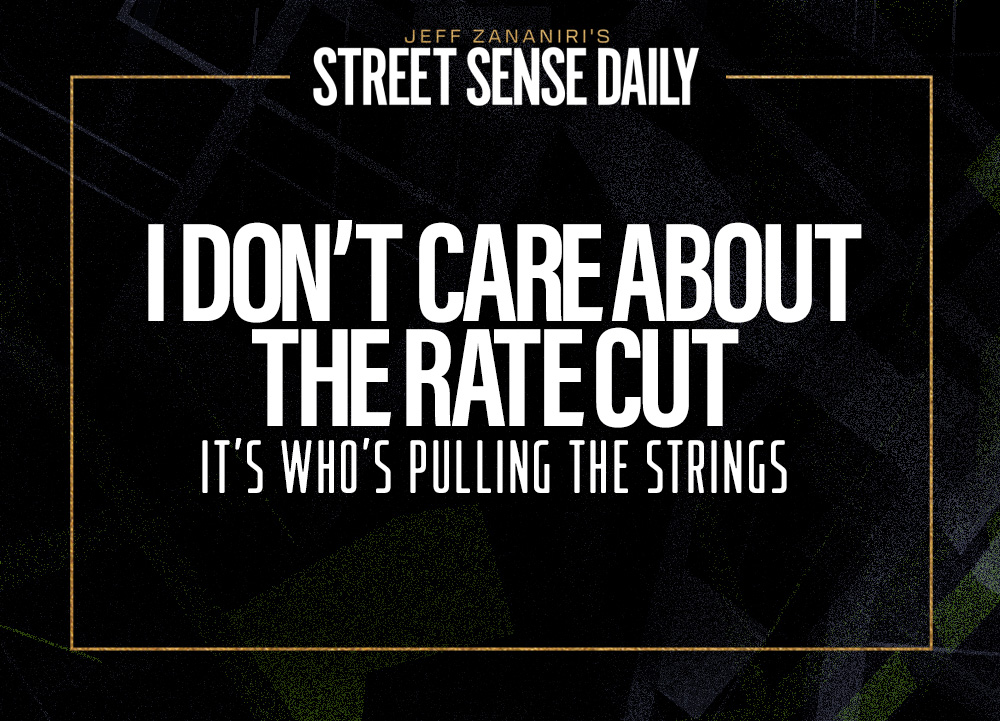Everyone’s cheering for rate cuts like it’s a get-out-of-jail-free card, but by the time the Fed starts slashing rates, it’s because the economy’s already breaking.
Wall Street loves to spin rate cuts as bullish. “Liquidity’s coming back,” they’ll say. “The Fed is pivoting.”
Yes, that might juice a short-term bounce, but step back and look at what rate cuts really mean…
They’re not a sign of strength.
They signal that growth is rolling over, demand is drying up, and layoffs are rising.
And the Fed — which is always late — is just trying to put a Band-Aid on a bullet wound.
Think about 2001 or 2008. Remember early 2020.
Each time, the market rallied on the first cut and then got crushed when the recession fully kicked in.
Rate cuts aren’t the beginning of the next bull market but the beginning of some real pain.
If you’re blindly buying into this rate cut fantasy, you’re trading the wrong direction.
Let me show you how to flip that script.
Why a Cut Is a Bad Sign
The Fed, whose policy arm will deliver a rate decision on Wednesday, doesn’t cut rates when things are fine.
They cut when:
- Unemployment is spiking
- Corporate earnings are falling off a cliff
- Credit markets are freezing up
- Consumer demand is evaporating
As I noted back in May, that’s not bullish; it’s the setup for a recession.
Let’s say the Fed drops rates by 50 or 75 basis points (although 25 is more realistic for Wednesday’s FOMC meeting).
Is that going to un-fire thousands of workers from Amazon or UPS? Is it going to get Americans spending more when they’re already maxed out on credit and seeing their home values fall?
No. Lower rates don’t solve demand destruction.
They don’t fix an earnings recession. They don’t bring back margins once they’re gone.
The market knows this (or it will eventually), but the first move is always a sugar high.
That’s your opportunity. Let the algos chase the pivot and let the retail traders celebrate like it’s 1999.
Then you look ahead three to six months and position for the second wave.
The real move.
Trading Late-Cycle Pain
If rate cuts are coming, you don’t want to be long the things that fall apart when the economy slows.
I’m talking about:
- Consumer discretionary stocks – People pull back on nonessentials fast. Think travel, retail, restaurants.
- Junk bonds (HYG, JNK) – When defaults rise and spreads blow out, these get crushed.
- High-beta names – The speculative stuff that only works when growth is strong and money is free.
Instead, start looking at trades that benefit from weakness, not strength.
- Put options on sectors tied to consumer spending or credit risk: When people start cutting back, companies tied to nonessentials and overleveraged balance sheets take the first hit. Put options here can offer serious upside if the slowdown accelerates.
- Bearish exposure to junk debt or weak corporate credit: Companies living off cheap borrowing are in trouble once liquidity dries up. If defaults rise or credit spreads widen, these names don’t just dip, they implode.
- Strategies that profit from rising volatility: When the market gets blindsided by a wave of earnings misses or credit events, volatility doesn’t just tick up — it explodes. You want to be positioned before that surge, not chasing it after the fact.
This isn’t about guessing headlines. It’s about understanding how markets move when liquidity fades and reality sets in.
No Lifejackets Here
If you’re waiting for the Fed to “rescue” the market, you’ve already lost.
By the time the Fed blinks, the smart money’s already short. The layoffs are already happening and margins are already collapsing.
This is where not chasing the narrative pays off. As traders, our job is to chase the reality instead.
Get positioned before the next wave hits.
But once the music stops, everyone will be sprinting for the same exit.
Be the one who’s already out the door.
Stay street smart,
Jeff Zananiri
P.S. Join Aaron Hunziker to learn how to double or triple your game using quick, strategic options.
Today at noon ET as he pulls back the curtain on a strategy that has shown the potential for steep gains in a matter of hours.
*Past performance does not indicate future results



